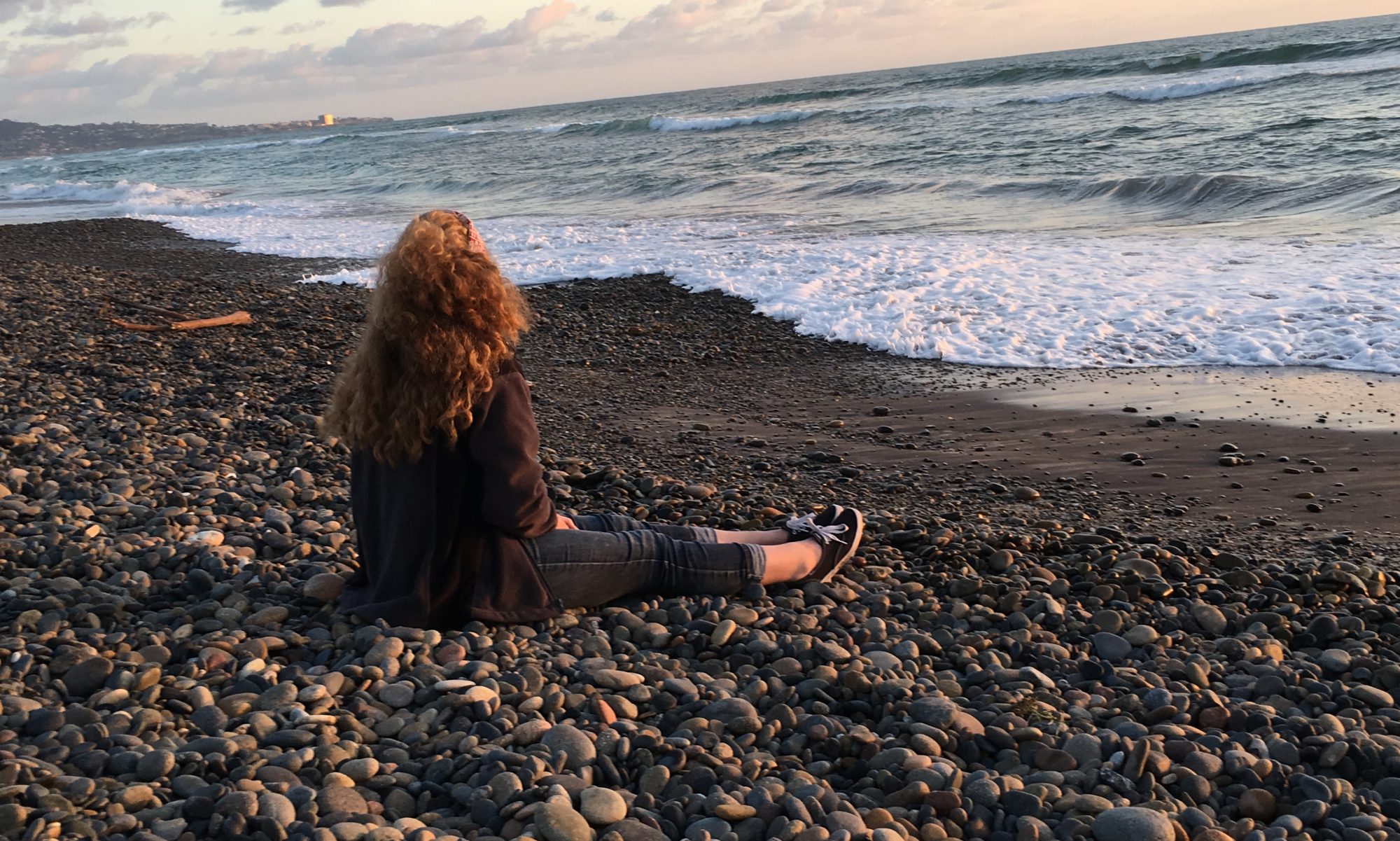** Sorry for delayed updates on the end of my journey in Europe due to Covid-19. I am going to be finishing up my blog posts on those last few weeks in the next few days since the dust has settled since my rushed return to the United States. **
February 25th, 2020
I arrived in The Netherlands marking my 20th country. However, I have not been to a country since I was 14 where I could not speak the native language. I have been taking advantage of how comforting it is to speak the language of a country over the past few years as I visited Ecuador (so many times I’ve got 2 pages filled with visas stamps there – Thanks Carlos). Arriving in Amsterdam and not even knowing the word for “exit” to find my way out of the airport was a new challenge.
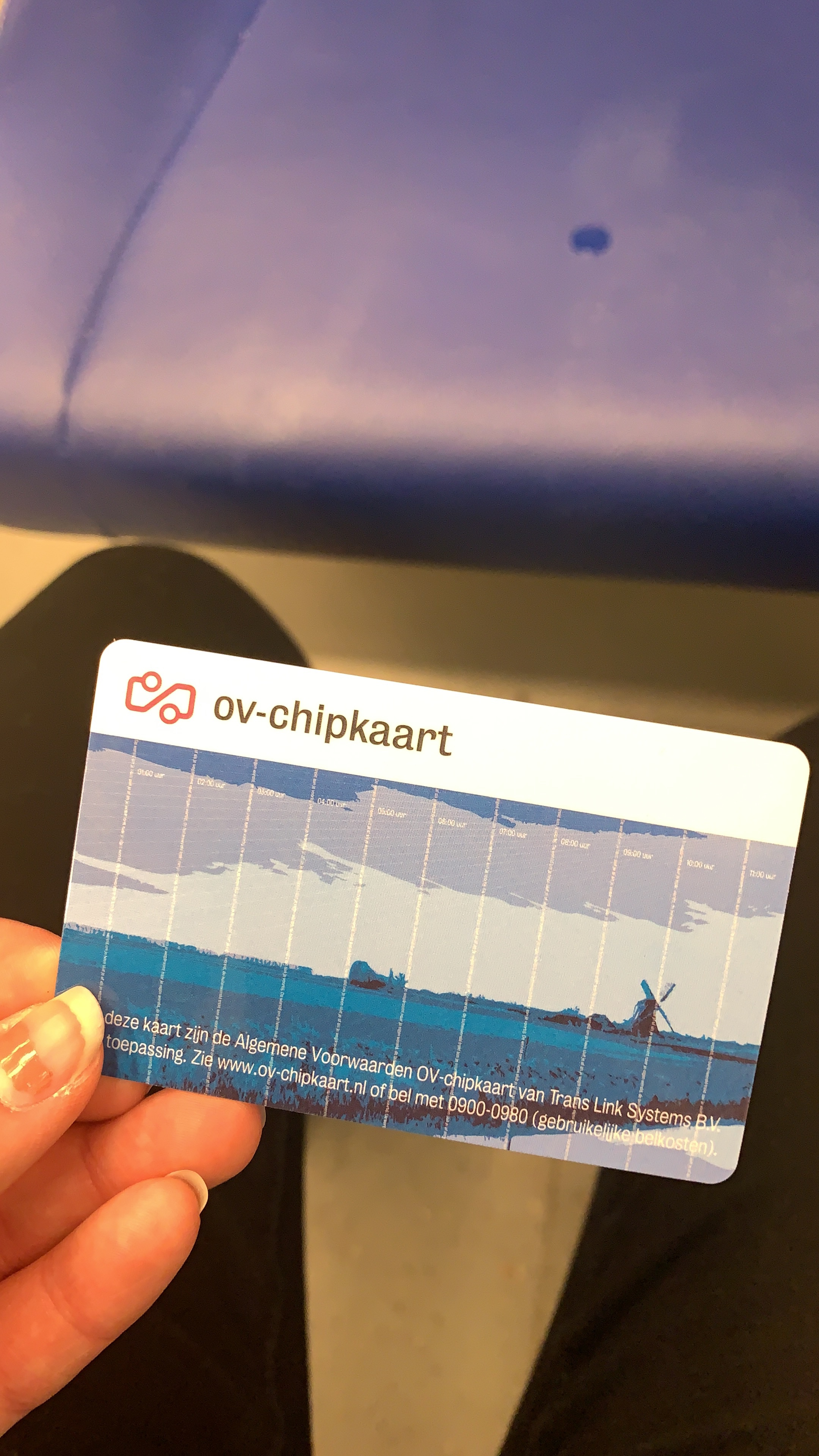
I met with a professor from UNC before I had left North Carolina for some recommendations for my time in The Netherlands. She told me about the great multimodal travel card that can get you around not only Amsterdam but all of the country. I was able to reload cash into this little card anytime I needed to during my week in the country. However, getting the card at a ticket booth left me on the floor. Literally, I fell over in the middle of the airport due to the weight of my travel backpack as I had bent over to try to get my wallet out of my other bag and somehow I ended up falling the other direction. I took it in stride and took my time to collect my money needed to get this universal travel card. With the help of the awesome phrasebook that my professor from UNC lent me and a kind airport worker, I was able to find which train I needed to take to get to my next host stay. (I learned soon that “uitgang” means exit and that while you try to pronounce things in Dutch, sometimes English ends up working better.)

The semi-permeable language barrier was not the only challenge I faced. Amsterdam is known for a few things that can quickly make you feel a bit out of place. I learned from experience that not all “coffee shops” in the Netherlands sell coffee. Sometimes you can only tell the difference when you walk inside to a very distinct smell. The other is the abundance of R rated items in the souvenir shops. I found these two things to be interesting to have around so openly.
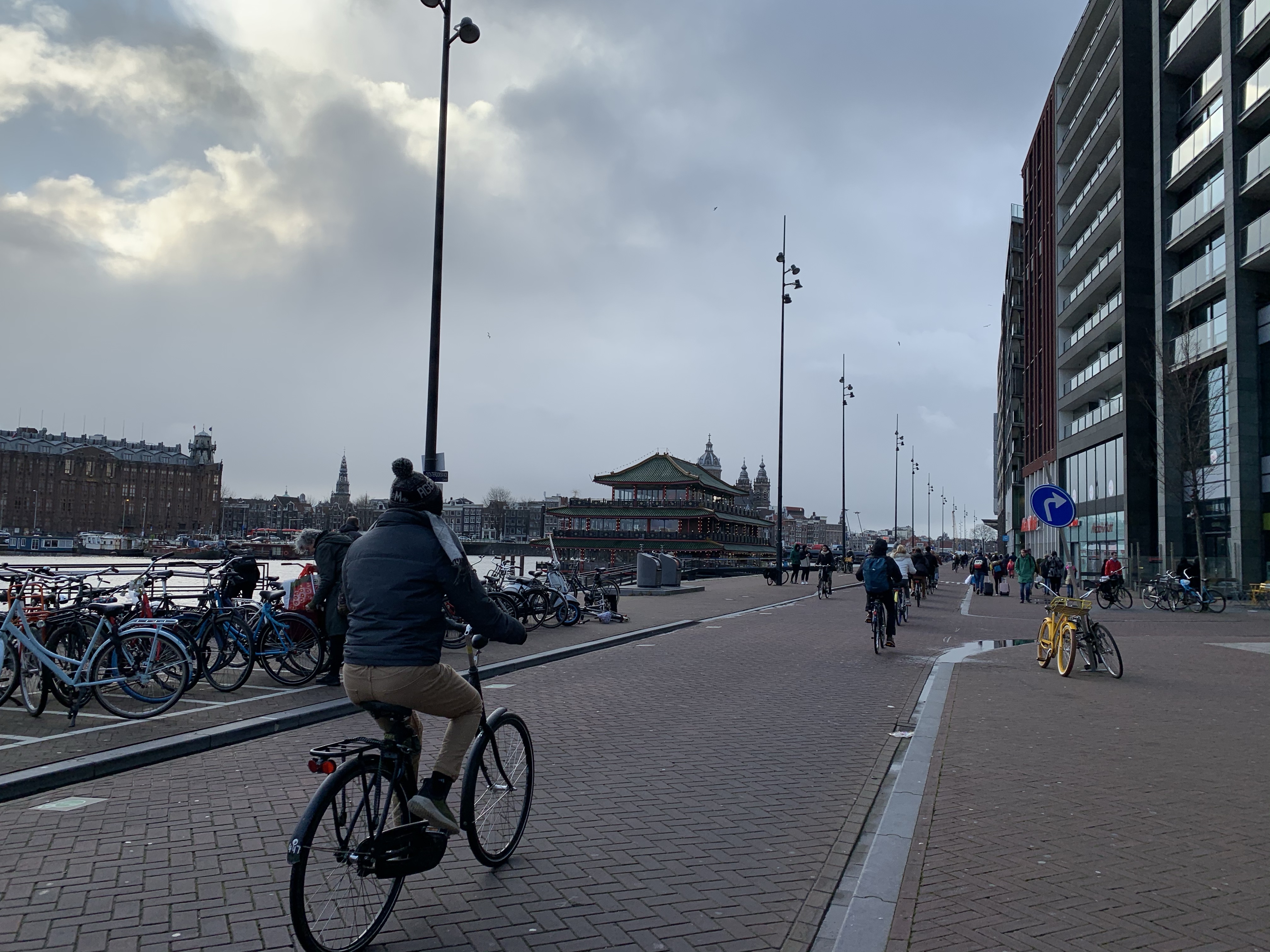
My favorite discovery was the hierarchy of mobility. In the US, it tends to go Cars – Pedestrians – Bicycles, even if there are laws and driving regulations that say something different. Our roads are just generally more friendly for cars than anyone else and cars tend to rule when it comes to modes of transportation. However, this hierarchy is flipped in Amsterdam. There are amazing networks of protected bike lanes and bikes even have their own traffic lights to follow, as do cars and pedestrians.
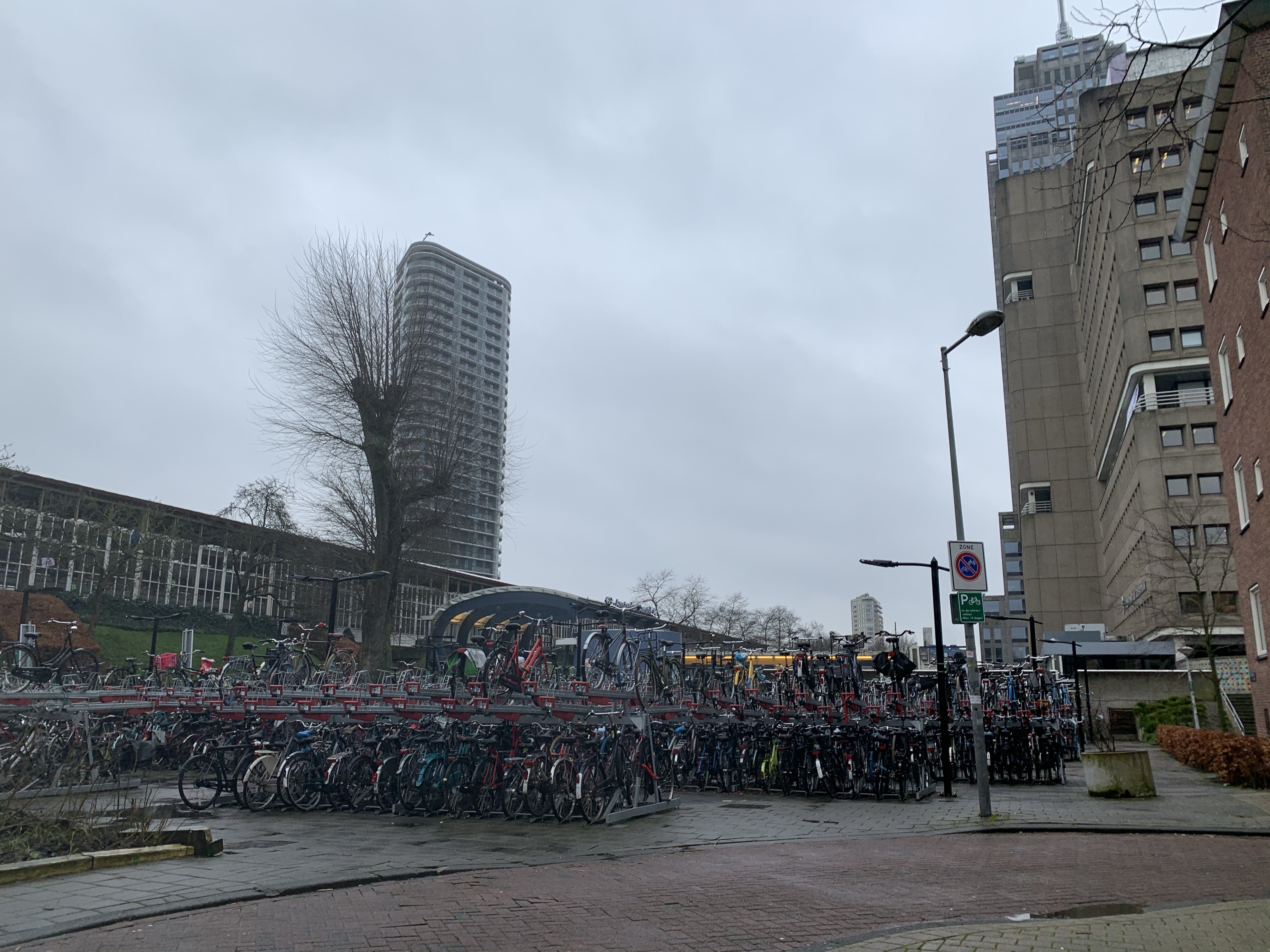 Bike parking outside of a train station
Bike parking outside of a train station
Along with the abundance of bicycles, the first thing I noticed about the cars was the number of electric vehicles. Within the first 10 minutes outside of the airport, I saw four Teslas. I saw this car outside of the train station on my walk to my new stay. It was sitting outside of an office building, a perfect way to let the car charge while you work, saving time from the usual need to go to a gas station. 
Later I explored around, feeling safe during the day wandering the streets of the center of the city.


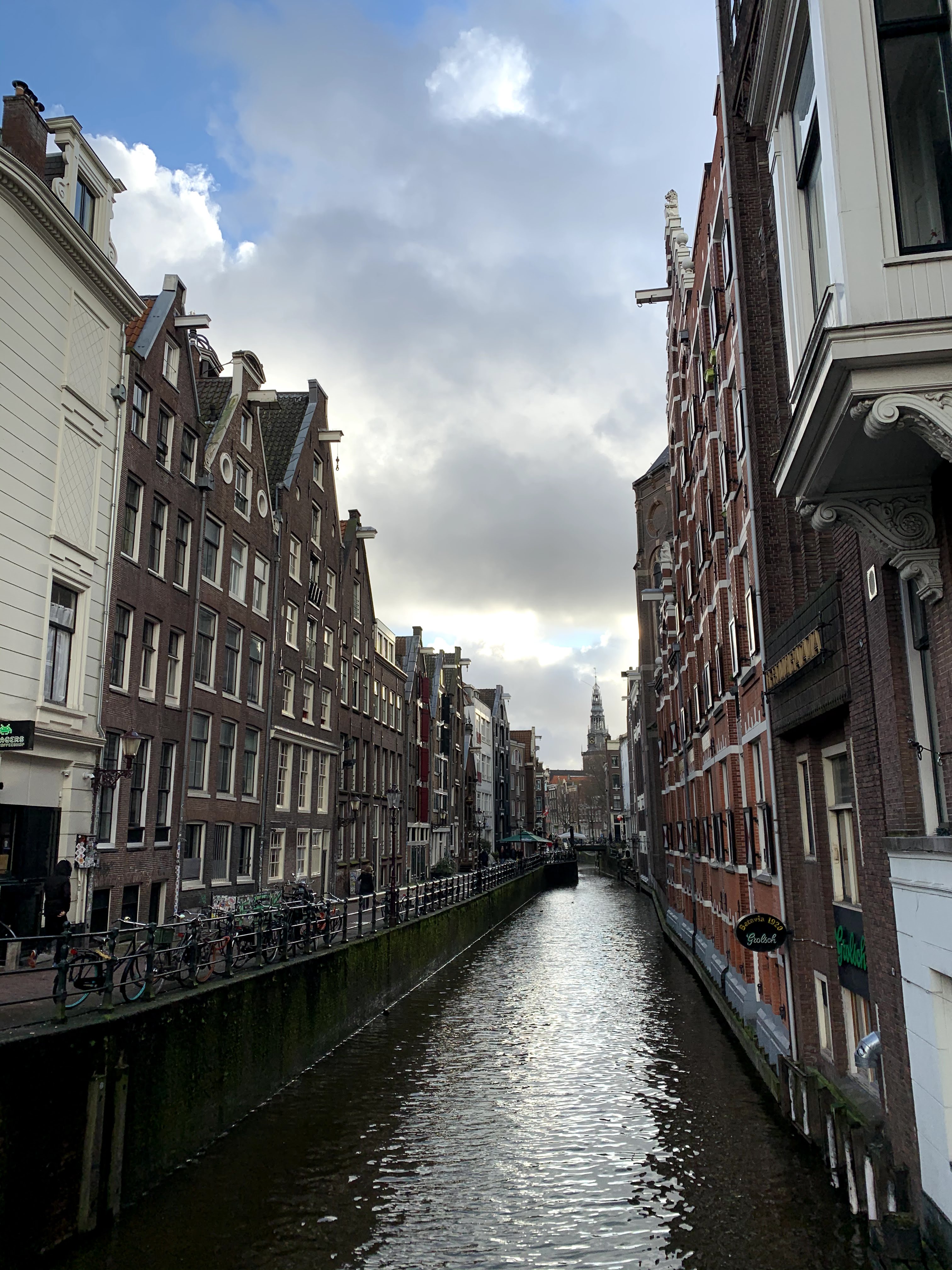
The water infrastructure of the canals was amazing. I wondered if the city has begun planning for future flood events that may be unpredictable due to climate change and sea-level rise. I loved the old buildings and wished I could find a little apartment to buy along the canal – then I checked the prices and it is out of the question!
February 26th, 2020
I made a reservation a month and a half ago to take a tour today of the Anne Frank House. When I arrived, there were already groups of people waiting outside the building for their museum entry time. Since I was entering the museum alone, they let me in a half-hour before my actual entry time. I set aside the whole day for this because I wanted to have time to process afterward and to spend enough time to sit and think about the space I was in.
The tour took place through the building and annex where Anne Frank, her family, and the Van Pels family lived for over two years in hiding. The museum provided audio guides which gave further information about the specific rooms visitors walked through along the way. I was thankful for the thorough education from CSD regarding the Holocaust/The Frank Family or else the tour would have been even more difficult to process both the physical place along with new knowledge of the history.
We were lead through the storefront rooms before entering the annex behind the original bookcase that was created as a cover for the entrance. We filed along in silence, trying to imagine how this space had been. Shocked by the normalcy of rooms, when faced with the reality of the circumstances. Anne Frank’s sister, Margot, had collected images of actors and other famous people from a magazine and pasted them on the wall. The floor was quite squeaky, which I noticed since the audio tour had told of the need for absolute silence as the storefront/factory space was still in operation during the day. That meant that the eight people living in the annex had to be entirely silent during the day. For over two years. I could not imagine needing to stifle every sneeze, cough, and avoiding conflict, the use of water, and any other activity that could blow their cover and cost them their lives. The stress that each day must have brought is unimaginable, yet the excerpts of Anne Frank’s journal still show some hope that she held. She dreamed of freedom and becoming a journalist. It felt invasive to be in their space of so many emotions and life.
Today was an especially emotional day after as I also reflected on the life of my cousin, Reese Solomonson. She passed away 16 years ago today. She lived for 141 days. Anne Frank lived for roughly 5,715. They both passed away during the month of February. Their stories are still shared, on a familiar community or global scale. I still remember holding Reese when she stayed at our house for a short visit. There are certain brands of hand sanitizer smells that still bring me back to that moment since we had to be super vigilant about keeping Reese from getting sick. I was only 6 years old when she passed away, but her story is still shared through our family. She felt so small and fragile yet we all know she was incredibly strong. She exceeded the expectations of her doctors. She had a short but wonderfully loved life.
The reason I even made the comparison of days alive between Reese and Anne Frank is because both of their stories continue on this many years later. Stories of resilience, searching for peace, and love. They faced very different circumstances in life but they can remind us still not to take life for granted and the power of resilience. Also that no one needs to be famous to the whole world when you will be remembered by your world.
Our family was basically Reese’s whole world and we are a continuation of her story. Anne Frank wrote to process her extreme circumstances, not for fame, but to share a story through her and her family. Her story became widely shared because of the setting and connection of her writing to other people. There was a small video at the exit of the museum that featured actors and visitors of the museum reflecting on Anne Frank’s story. Whoopie Goldberg made a great point that her story connects to so many people and allows us to experience her story because she was a normal teenager. People can connect to her experience as a young adult, leading to a greater impact of the humanization of what Jewish people experienced – after Nazi’s did all they could to dehumanize them.
